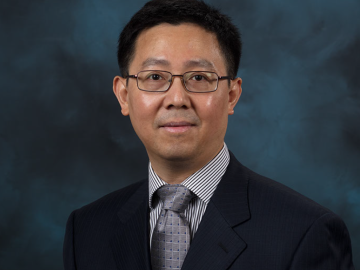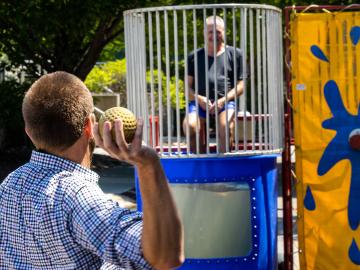Filter News
Area of Research
News Type
Date
News Topics
- 3-D Printing/Advanced Manufacturing (10)
- Advanced Reactors (2)
- Artificial Intelligence (16)
- Big Data (6)
- Bioenergy (7)
- Biology (9)
- Biomedical (4)
- Biotechnology (4)
- Buildings (5)
- Chemical Sciences (13)
- Climate Change (15)
- Composites (3)
- Computer Science (13)
- Coronavirus (2)
- Critical Materials (3)
- Cybersecurity (3)
- Decarbonization (11)
- Education (3)
- Energy Storage (9)
- Environment (12)
- Exascale Computing (3)
- Frontier (4)
- Fusion (3)
- Grid (4)
- High-Performance Computing (16)
- Isotopes (4)
- Machine Learning (5)
- Materials (31)
- Materials Science (8)
- Microscopy (4)
- Molten Salt (1)
- Nanotechnology (2)
- National Security (6)
- Net Zero (3)
- Neutron Science (9)
- Nuclear Energy (5)
- Partnerships (20)
- Physics (5)
- Polymers (2)
- Quantum Computing (4)
- Quantum Science (4)
- Renewable Energy (1)
- Security (2)
- Simulation (8)
- Statistics (2)
- Summit (2)
- Sustainable Energy (4)
- Transportation (7)
Media Contacts

Oak Ridge National Laboratory scientists set out to address one of the biggest uncertainties about how carbon-rich permafrost will respond to gradual sinking of the land surface as temperatures rise.

Zheng Gai, a senior staff scientist at ORNL’s Center for Nanophase Materials Sciences, has been selected as editor-in-chief of the Spin Crossover and Spintronics section of Magnetochemistry.

A quest to understand how Sphagnum mosses facilitate the storage of vast amounts of carbon in peatlands led scientists to a surprising discovery: the plants have sex-based differences that appear to impact the carbon-storing process.

U2opia Technology, a consortium of technology and administrative executives with extensive experience in both industry and defense, has exclusively licensed two technologies from ORNL that offer a new method for advanced cybersecurity monitoring in real time.

Jordan Hachtel, a research scientist at ORNL’s Center for Nanophase Materials, has been elected to the Board of Directors for the Microanalysis Society.

Three scientists from the Department of Energy’s Oak Ridge National Laboratory have been elected fellows of the American Association for the Advancement of Science, or AAAS.

Jingsong Huang, a staff scientist at ORNL’s Center for Nanophase Materials Sciences, has been selected as an associate editor of Frontiers in Soft Matter.

Employees ORNL gave nearly $786,000 to local nonprofits through the lab’s employee giving programs in 2022. ORNL’s managing contractor, UT-Battelle, provided an additional $151,000 in corporate contributions.

As part of a multi-institutional research project, scientists at ORNL leveraged their computational systems biology expertise and the largest, most diverse set of health data to date to explore the genetic basis of varicose veins.

Anne Campbell, an R&D associate in ORNL’s Materials Science and Technology Division since 2016, has been selected as an associate editor of the Journal of Nuclear Materials.




